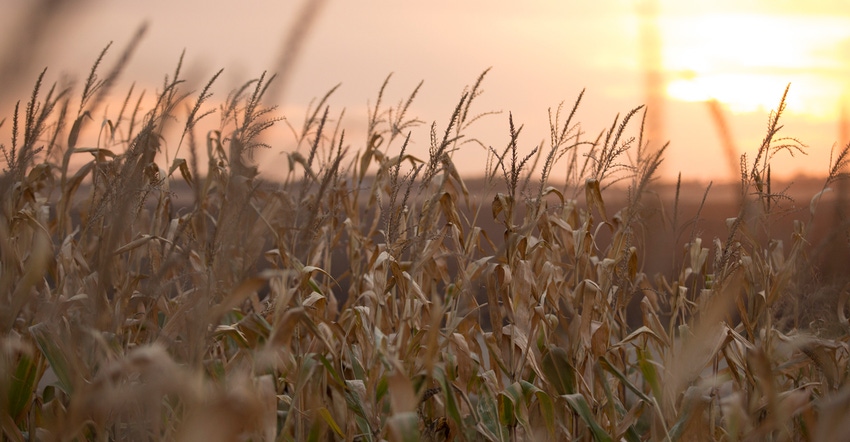July 21, 2020

In farming, there are few things you can truly control. However, you do have a say about the order in which you harvest your corn and soybeans.
Here are five tips to help make harvest order work in your favor.
1. Gauge corn stalk integrity and moisture content. Something we get almost every year in Minnesota is stalk rot, especially if we have a cool, cloudy and wet fall — conditions that are favorable for stalk diseases like fusarium and anthracnose.
Be sure to do a pinch test to check for stalk rot. Go down your corn rows and pinch 10 stalks in a row about 6 inches above the soil surface. If your thumb and forefinger meet, those stalks are compromised. If 15% of stalks tested in a field fail the test, prioritize that field for harvest.
You may need to harvest grain at a higher moisture content than desirable in order to harvest before lodging occurs. Keep an eye on your early-maturing hybrids to ensure they don’t get too dry. Harvesting corn at less than 15% moisture increases harvest loss due to head shatter.
2. Assess soybean moisture content and lodging potential. Soybean harvest readiness is largely determined by grain moisture content, which ideally should be 13%. But also pay attention to standability if you experienced hail damage during the season, which could weaken stems and make plants more prone to lodging.
Also, an insect infestation — for example, the soybean gall midge, which tunnels and burrows in the stem and feeds on the base — could make plants lodge. In these cases, you’d want to bump those fields up in your harvest order.
3. Leverage technology. There are crop modeling tools available that help predict when physiological maturity in both corn (black layer) and soybean plants will occur, as well as estimate grain moisture content thereafter.
Talk with your agronomist to see what he or she can offer to help plan and support your harvest order decisions with reliable data.
4. Scout for insects and disease. In addition to scouting for insects, also be on the lookout for corn and soybean diseases, most of which tend to overwinter on residue such as leaves, stems, stalks, cobs and root material.
Continuous corn and minimum- or no-till fields are at higher risk for disease, so potentially harvest those first if you do spot disease there. If you live in an area of Minnesota that didn’t get to harvest corn from 2019 until this spring, those fields are probably going to have more residue at the surface because they didn’t get deep tillage last fall.
5. Note weeds and nitrogen levels for next season. As you harvest, observe your weed control success from the combine. Make note of escaped weeds that have put on seed heads so that you can manage them for next year’s crop.
Take a basal stalk nitrate test after physiological maturity but prior to harvest, which could help you monitor nitrogen levels in your corn plants this year and determine if they were sufficient. Add this information to your scorecard at the end of the season to make better adjustments when planning for next year.
Take advantage of the tools available to help you determine harvest order and work with your agronomist to prioritize your fields appropriately.
Glady is a regional agronomist with WinField United in west-central Minnesota. Contact him at [email protected].
You May Also Like




